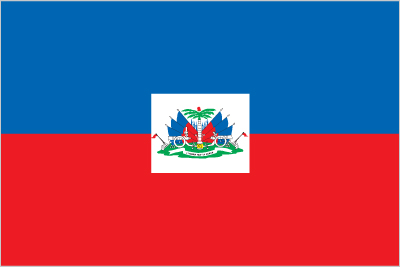
Haiti is a free market economy that enjoys the advantages of low labor costs and tariff-free access to the US for many of its exports. Poverty, corruption, vulnerability to natural disasters, and low levels of education for much of the population are among Haiti's most serious impediments to economic growth. Haiti's economy suffered a severe setback in January 2010 when a 7.0 magnitude earthquake destroyed much of its capital city, Port-au-Prince, and neighboring areas. Currently the poorest country in the Western Hemisphere with 80% of the population living under the poverty line and 54% in abject poverty, the earthquake further inflicted $7.8 billion in damage and caused the country's GDP to contract. In 2011, the Haitian economy began recovering from the earthquake. However, two hurricanes adversely affected agricultural output and the low public capital spending slowed the recovery in 2012. Two-fifths of all Haitians depend on the agricultural sector, mainly small-scale subsistence farming, and remain vulnerable to damage from frequent natural disasters, exacerbated by the country's widespread deforestation. US economic engagement under the Caribbean Basin Trade Preference Agreement (CBTPA) and the 2008 Haitian Hemispheric Opportunity through Partnership Encouragement (HOPE II) Act helped increase apparel exports and investment by providing duty-free access to the US. Congress voted in 2010 to extend the CBTPA and HOPE II until 2020 under the Haiti Economic Lift Program (HELP) Act; the apparel sector accounts for about 90% of Haitian exports and nearly one-twentieth of GDP. Remittances are the primary source of foreign exchange, equaling one-fifth of GDP and representing more than five times the earnings from exports in 2012. Haiti suffers from a lack of investment, partly because of weak infrastructure such as access to electricity. Haiti's outstanding external debt was cancelled by donor countries following the 2010 earthquake, but has since risen to $1.1 billion as of December 2013. The government relies on formal international economic assistance for fiscal sustainability, with over half of its annual budget coming from outside sources. The MARTELLY administration in 2011 launched a campaign aimed at drawing foreign investment into Haiti as a means for sustainable development. To that end, the MARTELLY government in 2012 created a Commission for Commercial Code Reform, effected reforms to the justice sector, and inaugurated the Caracol industrial park in Haiti's north coast. In 2012, private investment exceeded donor assistance for the first time since the 2010 earthquake.
$13.42 billion (2013 est.)
country comparison to the world: 148
$12.98 billion (2012 est.)
$12.62 billion (2011 est.)
3.4% (2013 est.)
country comparison to the world: 102
2.8% (2012 est.)
5.6% (2011 est.)
$1,300 (2013 est.)
country comparison to the world: 209
$1,200 (2012 est.)
$1,200 (2011 est.)
agriculture: 24.1%
industry: 19.9%
services: 56% (2013 est.)
80% (2003 est.)
6.3% (2013 est.)
country comparison to the world: 181
6.3% (2012 est.)
4.81 million
country comparison to the world: 81
note: shortage of skilled labor, unskilled labor abundant (2010 est.)
agriculture: 38.1%
industry: 11.5%
services: 50.4% (2010)
40.6% (2010 est.)
country comparison to the world: 192
note: widespread unemployment and underemployment; more than two-thirds of the labor force do not have formal jobs
textiles, sugar refining, flour milling, cement, light assembly using imported parts
6% (2013 est.)
country comparison to the world: 44